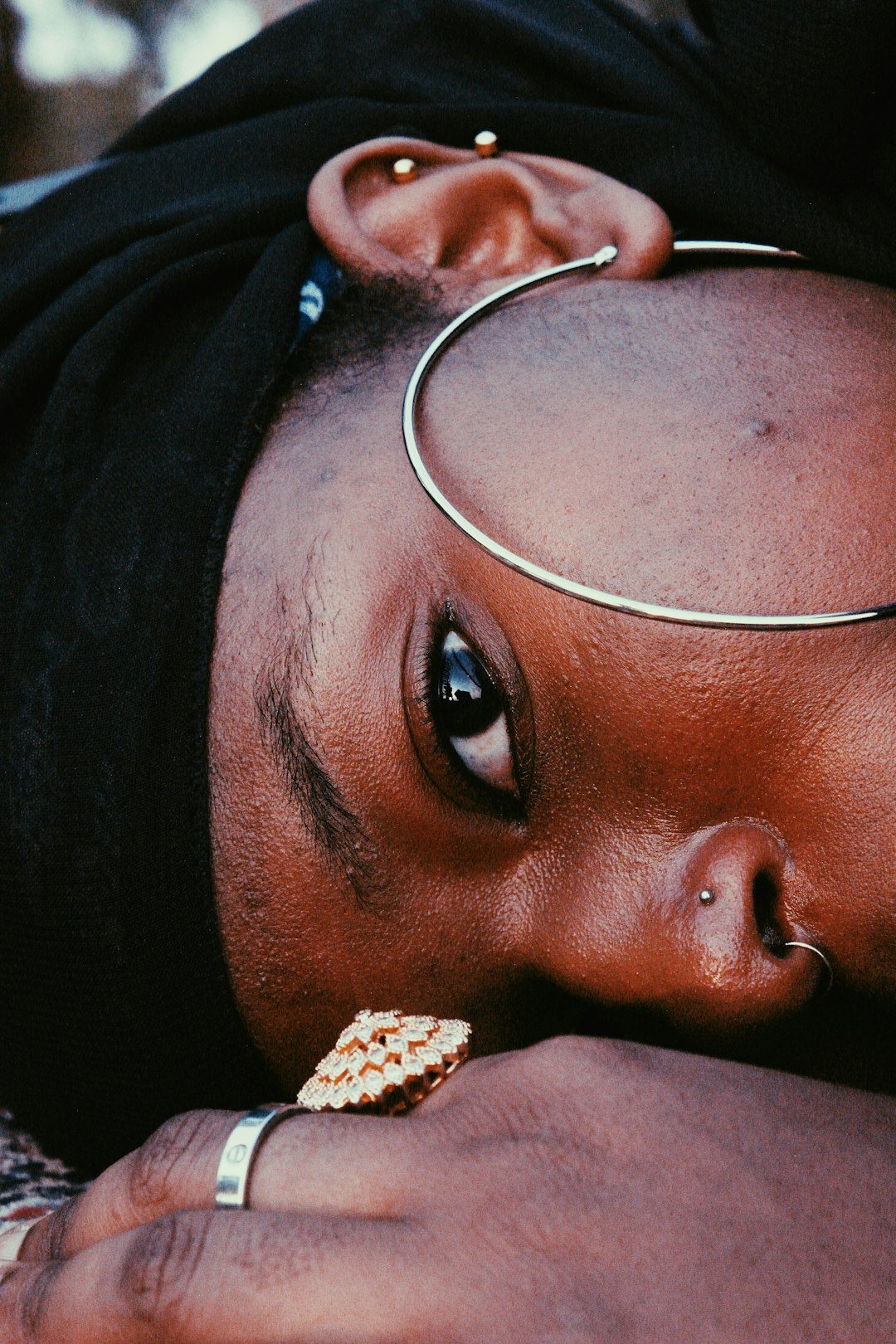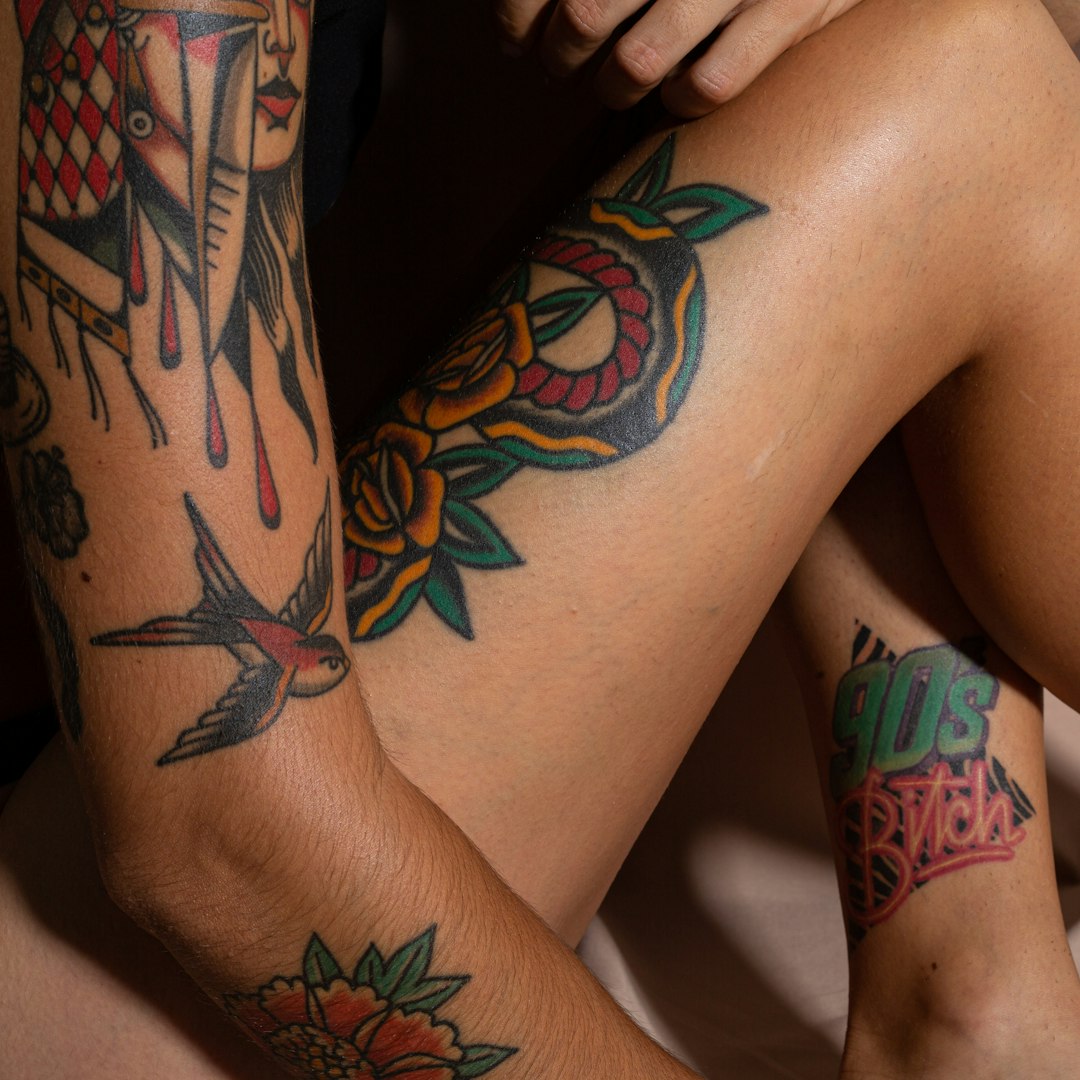Body modification vs. social media: Is there any connection?
More perspectives on "body modification", don't you know?
Technological advancements have given a prodigious rise to a range of gadgets, including smartphones, tablets, and laptops, as well as robots. With the introduction of many social applications available at the click of a button in a digitized world, communication has now become easier and faster. While it is unequivocally known that along with the development of the Internet, social media – breakthrough evidence in the communication of technology has facilitated the way individuals connect, it is also worth noting that those social networking sites have also been utilized to set standards and influence the “aesthetic” perception of people (Henriques & Patnaik 2020). This, in turn, has been shown to influence people's self-esteem in terms of body image, body modification, and how they see themselves in society. This is a testament to why the pivotal role of social media in body modification in this digitalized era has been portrayed much more apparent than ever, acting as both an effective facilitator and impediment in the way people modify their body image.
“Body modification” and the penetration of “social media”
There has been a rise in interest in body modification in the West during the last 30 years. The most visible trend is the rising prevalence of tattooing and piercing, as evidenced by the many rings and studs in noses, brows, tongues, and other body areas. Body modification refers to a wide range of activities that include piercing, tattooing, cutting, binding, implanting, or cosmetic surgery undergoing to change the appearance and structure of the body. Gymnastics, bodybuilding, anorexia, and fasting could be added to this list of behaviors in which the body surface is not physically inscribed and transformed using instruments to pierce and bind (Featherstone n.d.). People have been modifying their bodies for a host of reasons, including aesthetic enhancement, spiritual enlightenment, social prestige, good sense of individuality, or marking significant life events (Wohlrab, Stahl & Kappeler 2007). However, all of those alterations have three points in common. To begin with, body modification occurs only when the "body owner" agrees voluntarily. Second, those changes will undoubtedly affect the physical body. Lastly, the alterations are the result of human activity on the original body (Lane 2017).


Although the existence of body modification has lasted for thousands of years with a rich history, the penetration of social media has enabled body modification to become much more remarkable than ever. Admittedly, social media has played an important role with massive coverage in people’s lives. Accordingly, Facebook owned no less than two billion monthly users in 2017 and Instagram also had a dramatically risen in the number of active users over the years, marking the extremely common use of social media in human life (Franchina & Coco 2018, p. 8). Therefore, due to the hyper-available coverage of social media, people now have a wide range of opportunities to expose themselves to those web-based content, making social media to become one of the greatest factors that make users question and think about their body images. Indeed, studies show that 88% of women and 65% of men say that social networking sites are contributors that make them more aware of their body images (Emotion Matters n.d.), which bear a strong correlation to the decision of modifying their appearance.
Social media – a “catalytic” factor in increasing beauty enhancement
The emergence and intervention of social networking sites have acted as a catalyst for people to modify their appearance. In an Internet-crazed world, where people are more liable than ever to be affected and acquire a profound perception of body image based on the exposure to a gigantic amount of information, body modification has been largely popularized by virtue of the “visual megaphone” of social media (Greenwood 2021).
Granted, there are more and more body-positive movements that are gradually widespread on many social media platforms, appealing to participants, especially women to follow and change their appearance. On Instagram, for example, the #fitspiration tag is used to display images of lean and toned body types. The purpose of this tag is to motivate people to become more healthy and balanced by allowing users to explore exercise-related photos and videos as well as engage with others who share their interests (Emotion Matters n.d.). The fundamental content of those images and videos is often about fitness recommendations, healthy recipes, or “before and after” photos to show the weight or muscular changes (Carrotte, Prichard & Lim 2017). According to a recent cross-sectional poll, 31% of young Australians follow #fitspiration, revealing that they have a special interest in this activity and are trying to follow it (Carrotte, Prichard & Lim 2017). Therefore, such movements have driven people to place more attention on their looks by taking care of their body through gymnastics, losing weight to successfully secure their desired appearance. Apparently, social networks here play an especially essential role in pushing people to strive for better health and beauty.

How vibrant!
Albeit inspirational on the surface, studies show that social media have set unreal beauty standards, which bear a direct link to body image concerns and body modification of women. Diet, food, fashion, cosmetic surgery, pharmaceuticals, and the media all portray bodies as being about performance, fabrication, and exhibition, leading audiences to believe that their bodies are sites for (re)construction and betterment. They imbue audiences with the idea that their body's capabilities are only limited by their determination (Coy-Dibley 2016, p.3). In this aspect, #fitspiration on Instagram has been viewed as “model” perceptions about health and fitness, altering health beliefs and stimulating people to feel a “moral obligation” to acquire a specific body type (Carrotte, Prichard & Lim 2017). Consequently, this may lead to the obsession of individuals with those “models”, forcing them to exercise compulsively at an excessive rate to attain their desired appearance (Coy-Dibley 2016, p.2). The constant quest for the perfect skinny lean physique can cause negative thoughts, which can lead to a shift in eating habits, increasing the likelihood of weight difficulties and eating disorders – which are no longer the biggest concern of women due to the burning obsession to attain a “perfect” appearance, in which the standard of perfect is the unrealistically created by social media.
Besides, in conjunction with the growing popularity of beauty standards set by social media, there is also an increase in the number of young individuals undergoing cosmetic treatments (Walker et al. 2019, p. 3355). According to the survey reported by the American Society for Aesthetic Plastic Surgery, there had been a rise from 17.2% in the number of young people enduring cosmetic procedures in 2014 to 18.2% in 2017 (Walker et al. 2019, p. 3356). Researchers have noted that as a result of social media photo sharing, there has been an upsurge in the demand for surgery, implying that body dissatisfaction relates to comparison among photos young people view online may impact their decision to seek cosmetic procedures (Walker et al. 2019, p. 3356). Another reason leading to the case of more and more people getting involved in getting plastic surgery is that people want to look more like photo filters (Wallace 2020). According to the original BU paper, filtered selfies – a breakthrough development equipped in many social media platforms, maybe "blurring the border between fact and fiction" and causing some people to acquire "body dysmorphic disorder," a mental ailment in which people become hyperfocused on perceived physical imperfections (Wallace 2020). As a consequence, people will be likely to rebuild their appearance by calling for plastic surgery (Wallace 2020).
Social media as a digital community to both share and hinder “body modification” interest
Aside from being a factor influencing the decision to reinforce one's beauty, social media is also a place where those who like "self-mutilation" – a conceptualized word referring to the action of tattooing and body piercing, can find a sense of belonging (Adams 2009, p. 105). Indeed, since time immemorial, people are often reinforced stereotypical associations of these “body arts” with criminality or other deviant behaviors, making people with visible tattoos or piercings have difficult times because of the discriminatory gazes of the public community (Adams 2009, p. 106). Nevertheless, thanks to the intervention of mainstream activities and the digital community, those body modifications are no longer exclusive to prison inmates, villains, and gang members, but they are considered the body arts which also reveal the aesthetic values (Millner & Eichold 2001, p. 425). As a result, many communities on social networks - acting as a digital community - are organizations of individuals who share similar ideas, beliefs, and interests in specific digital groupings, to assemble people with similar interests in the body art, also known as the tattoo artist community. Gradually, this art form has become more prominent than ever among youngsters, and it is not hard to discover communities of people who have a common interest, or YouTube videos that debunk tattoo prejudices. This has enabled those who were previously intimidated by tattoo and piercing stereotypes to gain confidence and pursue the art form they desire (Michalak & Mirah 2022).
On the other hand, the abundance of relevant information on social networking sites and forums has also enabled people to consider carefully before deciding to undergo body modification. The decision to modify one's appearance is no longer subject to many prejudices and tremendous pressures from the perceptions of others, as it was in the past, but will be based on each individual's viewpoint (Michalak & Mirah 2022). Indeed, numerous articles and videos discuss and reveal the physical and mental implications individuals confront, ranging from the risk of infection to the effective aftercare required during the healing process. Those who desire to implant such art forms in their bodies will have the opportunity to gain knowledge more about what they are doing before making a decision, staying more aware of the ramifications they would experience, which will cause them to question themselves: whether they truly desire this change in appearance (Hadhazy 2020). As a result, after acquiring the relevant knowledge, there were multiple examples of youngsters sharing that they fear that this decision would make them feel regretful in the future, prompting them to discontinue possessing impulsive intentions about tattooing and piercing.
Rather than being a phenomenon with the purpose related to communication and connecting with others, social media itself plays an indispensable role in influencing the human perception of beauty, which can even lead to body modification. The aforementioned fundamental grounds have elucidated thoroughly how the emergence of social networking sites has gradually been placed as an essential role in impacting the processing of modifying appearance by gaining insight into its specific function at present. Through analysis, it can be clearly seen that social media does play a role of a facilitator, allowing people to make decisions to rebuild their appearance whether the effects it brings back are detrimental or not. With its massive coverage all over the world, social media has become one of the most impactful contributors, making audiences raise awareness of their body image more than ever. Not only an efficacious tool in making people reinforce their beauty, but social media also gives people more modern and accepted perspectives towards people who have body arts, assisting both those people and the community to acquire a multi-dimensional view of tattoos and piercings. In present times and also, in the future, social media will undoubtedly continue to be a pivotal part of body modification due to its impacts on how people absorb, perceive, and interpret the content received from those sites.
REFERENCES:
Adams, J 2009, "Bodies of Change: A Comparative Analysis of Media Representations of Body Modification Practices", Sociological Perspectives, vol. 52, no. 1, p. 105.
Adams, J 2009, "Bodies of Change: A Comparative Analysis of Media Representations of Body Modification Practices", Sociological Perspectives, vol. 52, no. 1, p. 106.
Carrotte, E, Prichard, I & Lim, M 2017, "“Fitspiration” on Social Media: A Content Analysis of Gendered Images", Journal of Medical Internet Research, vol. 19, no. 3, p. E95.
Coy-Dibley, I 2016, "“Digitized Dysmorphia” of the female body: the re/disfigurement of the image", Palgrave Communications, vol. 2, no. 1, p. 2.
Coy-Dibley, I 2016, "“Digitized Dysmorphia” of the female body: the re/disfigurement of the image", Palgrave Communications, vol. 2, no. 1, p. 3.
Emotion Matters n.d., How Does Social Media Influence Body Image? | EmotionMatters, viewed 10 April, 2022, <https://emotionmatters.co.uk/2018/10/04/how-does-social-media-influence-body-image/>.
Featherstone, M n.d., "Body Modification: An Introduction", Body Modification.
Franchina, V & Coco, G 2018, "The Influence of Social Media Use on Body Concern", vol. X, no. 1, viewed 10 April, 2022, <https://www.researchgate.net/publication/331114176_The_Influence_of_Social_Media_Use_on_Body_Concern>.
Greenwood, D 2021, The BBL Bubble: How Social Media Fuels Body Modification, viewed 10 April, 2022, <https://www.psychologytoday.com/us/blog/mirror-mirror/202108/the-bbl-bubble-how-social-media-fuels-body-modification>.
Hadhazy, A 2020, viewed 10 April, 2022, <https://www.scientificamerican.com/article/survival-of-the-tattooed/>.
Henriques, M & Patnaik, D 2020, "Social Media and Its Effects on Beauty", Beauty - Cosmetic Science, Cultural Issues and Creative Developments, viewed 10 April, 2022, <https://www.intechopen.com/chapters/73271>.
Michalak, J & Mirah, M 2022, Why Has the Popularity of Tattoos Grown?, viewed 10 April, 2022, <https://www.byrdie.com/why-are-tattoos-popular-3189518>.
Millner, V & Eichold, B 2001, "Body Piercing and Tattooing Perspectives", Clinical Nursing Research, vol. 10, no. 4, p. 425.
Walker, C, Krumhuber, E, Dayan, S & Furnham, A 2019, "Effects of social media use on desire for cosmetic surgery among young women", Current Psychology, vol. 40, no. 7, p. 3355.
Walker, C, Krumhuber, E, Dayan, S & Furnham, A 2019, "Effects of social media use on desire for cosmetic surgery among young women", Current Psychology, vol. 40, no. 7, p. 3356.
Wallace, A 2020, What is ‘Snapchat dysmorphia’?, viewed 10 April, 2022, <https://www.deseret.com/u-s-world/2020/2/11/21132106/snapchat-plastic-surgery-filters-dysmorphia-body-image-photo-editing>.
Wohlrab, S, Stahl, J & Kappeler, P 2007, "Modifying the body: Motivations for getting tattooed and pierced", Body Image, vol. 4, no. 1, p. 87.

Quan điểm - Tranh luận
/quan-diem-tranh-luan
Bài viết nổi bật khác
- Hot nhất
- Mới nhất
Hãy là người đầu tiên bình luận bài viết này




